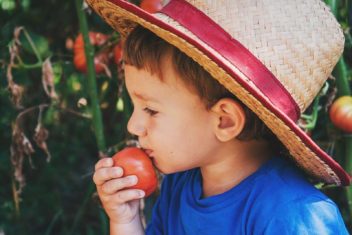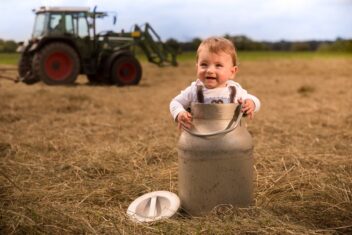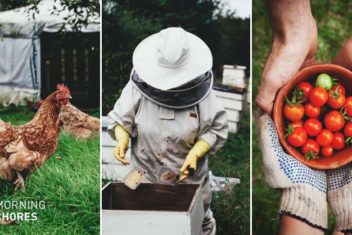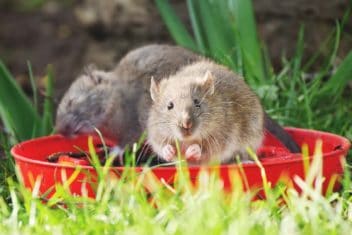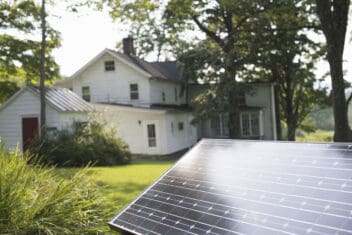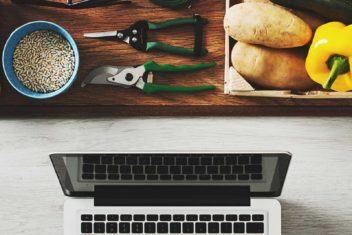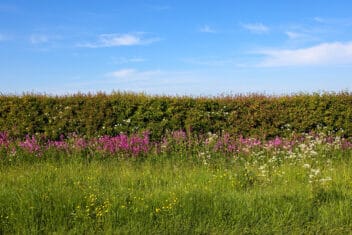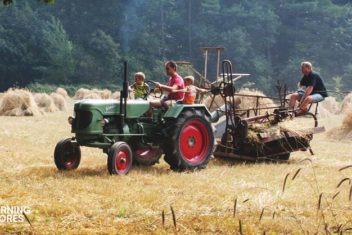Until I started homesteading, I always had reservations about celebrating Thanksgiving. Let’s face it, the holiday has a complicated history.
It is only by considering this complicated history and reflecting on it from a homesteader’s perspective, that I could make up my mind whether this important date should be a day of celebration or mourning.
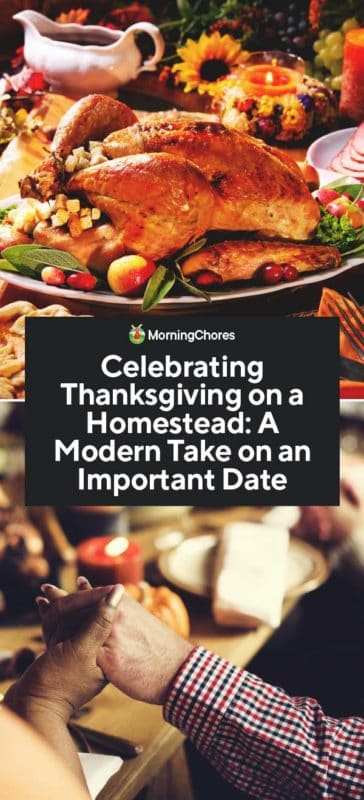
A Brief History of Thanksgiving
The event that the American Thanksgiving commemorates is a 3-day feast at the Plymouth colony. It was a tenuous, diplomatic affair between the native Wampanoag people and the immigrant English, who we now call pilgrims.
According to many historical accounts, the English immigrants got off to a really bad start with the local residents. They had moved into cleared lands that were only unoccupied because imported diseases had wiped out the entire population of the Patuxet villagers. Only a few Patuxet, who had been taken into slavery, survived.
Early on, the pilgrims desecrated graves and stole the food stores of the natives because they were ill-prepared to survive in the new land. Despite those horrible acts, Squanto – one of the few Patuxet survivors – used the English language he learned (as a European slave) to teach the pilgrims to survive. Other Wampanoag people also gave food to the immigrants until they could grow their own harvest.
I am sure the pilgrims felt incredible gratitude to the Native Americans for helping them survive. Still, the 3-day event that has come to be known as the first thanksgiving was likely an uncomfortable affair. Cultural differences, trust issues, and uncertainty about the future had to have been on the minds of all the attendees.
Reconciling Thanksgiving

Today a significant number of Native Americans don’t celebrate the American Thanksgiving declared a holiday in 1863 by Abraham Lincoln. Given the Native American and colonial history from that point forward, it’s easy to understand why. Many Native Americans instead use the Thanksgiving holiday as a time of mourning and reflection.
Though I identify as a Caucasian American, I too have grappled with the ethical implications of celebrating this holiday. Most of my ancestors came over later in American history — as refugees from the incredible poverty, famine, and political persecution in the United Kingdom.
As far as I can tell, my ancestors were very similar to most who arrive seeking asylum on the US borders today. They weren’t looking for wealth or grandeur. They simply wanted to survive and provide for their families. Yet, they ultimately inhabited lands that were effectively stolen from the Native people.
Thanksgiving from a Homesteaders Perspective
Now, I am not a party pooper. I certainly don’t want to rain on anyone’s Thanksgiving Day parade. So, if you have family traditions that work for you, then keep them up!
However, if you are like me and have struggled to find meaningful ways to celebrate a holiday with such a conflicted past, then taking a homesteading perspective on history may help.
Here are some of the ways my homesteading experience has helped me to reconcile the history of Thanksgiving with the family celebrations we enjoy each year.
Idea 1: Celebrate Greater Self-Sufficiency
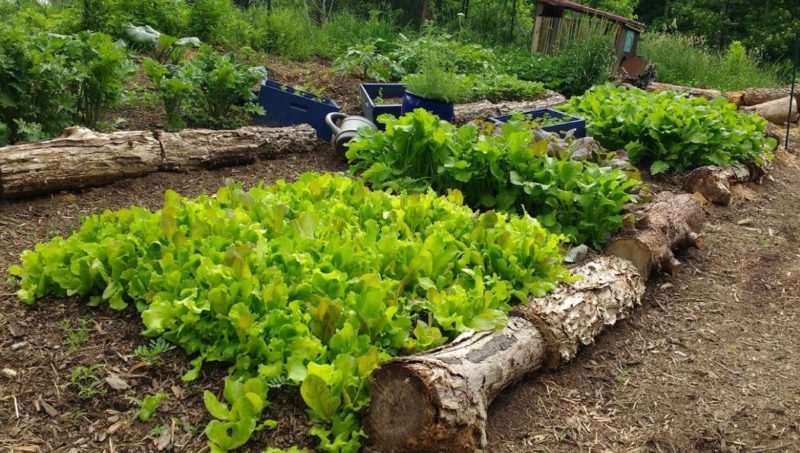
The way I see it, that first Thanksgiving was partially an homage to the Pilgrims’ success at developing greater self-sufficiency. With Native American help, they had learned to feed themselves in a new land. They even had a surplus to share.
Whether you are new to homesteading or have been doing this for years, you probably have some achievements to celebrate. Maybe you got your first flock of chickens, started a garden, got your best harvest ever, or made your own homespun sweater.
Perhaps you just made it through some particularly tough weather or fires with your homestead still intact. These are all actions toward greater or continued self-sufficiency worth celebrating.
Take account of your successes as a homesteader, small and large, and give thanks that you were able to achieve or maintain some of your self-sufficiency goals.
Idea 2: Acknowledge Debts of Gratitude
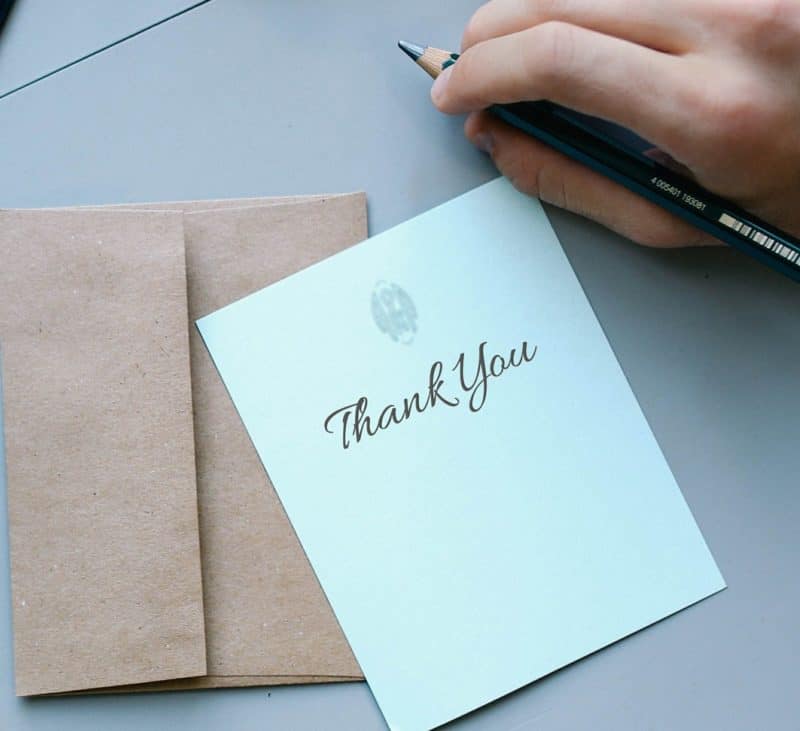
As every homesteader knows, true self-sufficiency is a myth. We are always dependent on the land and its resources, on our ecosystems, and on the communities we interact with regularly.
Though I can only speculate, I believe that historical Thanksgiving must have also been a recognition of the debt owed to the Wampanoag who helped the Pilgrims learn to survive. I imagine there was also some sense of gratitude to the legacy of the Patuxet tribe whose lands the Pilgrims inhabited. I believe this because I had a similar experience when I started homesteading.
– Help From Strangers
When we moved to our homestead, many of the long-term residents were a bit put off by us uppity, big city, liberal Northerners who migrated into their rural community. Yet, they still helped us get started.
They gave us advice on where to get things like straw, hay, compost, livestock and feed, and cheap lumber. Our neighbors told us who to call for service. They shared skills like how to kill hogs, raise chickens, and more. They also gave us things that we needed to get started like an egg incubator, firewood, cow manure, lightly used fencing, seeds, fresh fruit, and more.
– Existing Development
Like the Patuxet village lands inhabited by the pilgrims, our landscape was already partly developed. The original Lao family who cleared it planted some of the wild species we now use regularly as foraged foods and for herbal medicine.
The area they cleared had a perfect orientation to the sun. The house was also cited exactly right for protection from many environmental risks like fires, floods, or damaging winds.
The second owners, a local couple, cleared trails through our woods that make foraging and goat walk easier. They also built outbuildings with wood they milled. The labor of those two previous families gave us a big head start on making our homestead successful.
– Debt Recognition
None of us does this alone. Whether we’re reading about other people’s homesteading experiences on the internet or learning from our near neighbors, we all need a little help to get started.
A Homestead Thanksgiving is a perfect time to acknowledge that greater self-sufficiency is only possible because we have access to people, resources, and information that help us move in that direction.
Idea 3: Give Global Thanks
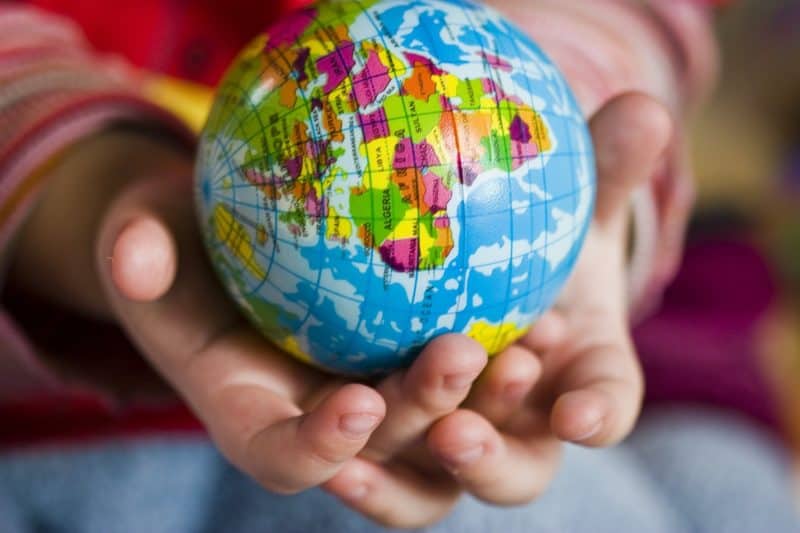
That first meal that initiated Thanksgiving dinners, was modeled on global contributions.
– Corn, Squash, and Beans
The Three Sisters – corn, squash, and beans – were likely served at the first Thanksgiving. Those contributions were possible because the Native Americans saved seeds. They shared those seeds and methods for growing with the pilgrims. However, those crops likely migrated North from parts of Southern and Central America over thousands of years.
– Cranberries
Cranberries are one of the only popular fruits native to North America. They were most likely introduced to the pilgrim diet by the Narragansett people. They were traditionally used for tart-tasting sauces.
– Sweet Potatoes
Sweet potatoes, now also common on many Thanksgiving tables, were South and Central American staples. They were introduced to European growers through Columbus’s exploits. Even though they are native to the Americas, many accounts say that they came to the US by way of the English colonists.
– Turkey
Turkey, the centerpiece of our modern Homestead Thanksgiving, was also served at the Plymouth feast. It was wild-caught and had likely migrated over thousands of years from South America. Yet, Europeans already knew all about turkeys.
Domesticated varieties were brought to Spain from the Americas as early as 1500. They were imported by way of Turkey, which is probably how they got their name.
Can you imagine how exciting it must have been for the pilgrims to discover a little taste of their old home, running wild in their new home?
– Global Contributions
Today, our dinners include all sorts of ingredients from all around the world. So-called Irish potatoes, first cultivated by the Incas in Peru, are a “must” mashed, roasted, or otherwise prepared.
Black pepper, native to the Malabar coast of India, would be sorely missed at Thanksgiving if not used to compliment nearly every dish on the table. Oh, and what would pumpkin pie be without nutmeg from Indonesia, Allspice from Jamaica, Honduras, and Guatemala, and Cinnamon from Ceylon or China?
There is unquestionably a lot of ugliness in the history of the foods we feature on our Thanksgiving tables. Yet, we can take time to recognize the cultures that cultivated and contributed them to our shared culinary history.
Bring history and honor to your Homestead Thanksgiving table by learning about the cultures and people that have made the incredible variety we take for granted, possible.
Idea 4: Make It Last
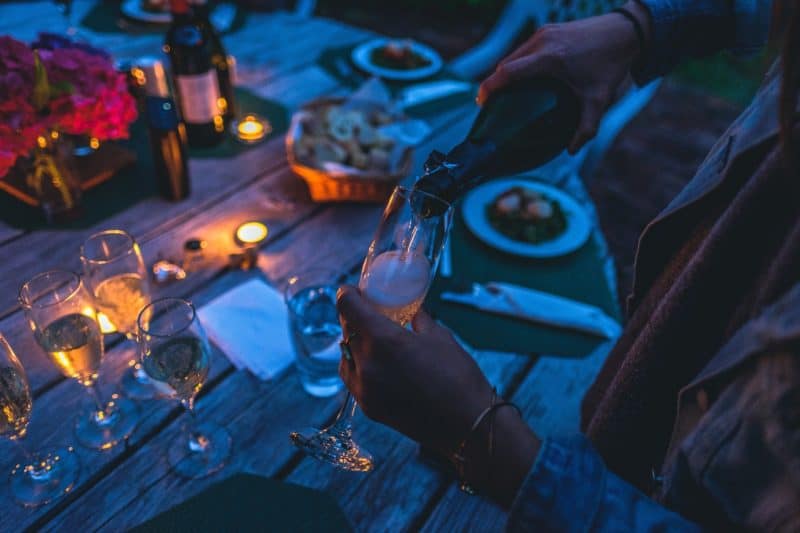
That first Thanksgiving was also a 3-day affair. Now, granted, travel took a while. So, it made sense to spend a little time somewhere before heading back.
Today though, we’ve gone to the opposite extreme. We race to our destination, plow through a meal, then head out just as quickly to our next social obligation. We often overeat, but still end up feeling empty with regards to the important things like family time, relaxation, and gratitude.
Even if you can’t make your Thanksgiving a 3-day feast, consider making it last longer than the time it takes to dine and dash. Share the responsibilities of gathering or growing the ingredients you use.
Cook together as a family. If your kitchen is cramped, then make a multi-course meal with a different cook tackling each dish. Do dishes between courses with everyone pitching in on the drying duties.
Take time to savor the planning, preparation, and act of eating while intermittently allowing time to give thanks and reflect as a family.
Idea 5: Eat Locally
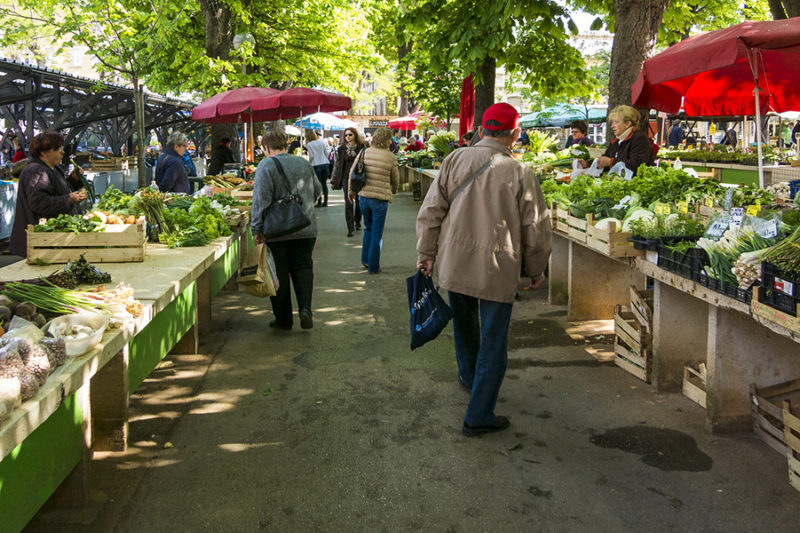
Amazon Prime did not deliver to Plymouth circa 1621. People had to use what was locally grown, hunted, foraged, traded or carted across the ocean at the speed of sails and wind. One of the ways you can step back in time and take a page from the pilgrim playbook is to plan your meal using only what you can locally grow or source.
I know, I know…it’s so hard to eat locally and not everything you are used to may be available. However, you can find ways to go local while still having a wonderful meal. You just have to think outside the box – especially the grocery store instant mashed potatoes or stuffing kind of box!
– Turkey Alternatives
Turkey was not the only meat eaten at the first Thanksgiving. They had venison, goose, rabbit, eel, fish, pheasant, duck, and more.
Don’t feel tied to the turkey. If you can get other local meats, raise your own, or hunt, that’s a much better option than eating a confined, factory-raised turkey.
– Long Storing Favorites
Though we often eat corn at thanksgiving, more often than not, it’s sweet corn frozen or canned from summer. The corn served at Plymouth was more likely maize corn well suited to long storing. Beans too were likely not green beans but dried beans.
Even if you can’t get fresh, local green beans and sweet corn, you can substitute long-storing varieties that were locally grown. I use Cherokee corn to make polenta instead of creamed sweet corn. I also opt for blackeyed peas instead of green beans as good long-storing favorites.
Mashed or roasted winter squash is another good option that can be found locally in many areas. Potatoes or sweet potatoes often grow in different climates. So, if you can’t find sweet potatoes, you can probably find potatoes and vice versa.
– Desert Options
Desert probably wasn’t a feature of the first Thanksgiving at Plymouth. Processed sugar already existed and was grown using slave labor. However, it wasn’t as commonly available as it is today.
Maple syrup, provided by the Wampanoags, may have been the sweetest thing at the first Thanksgiving. Today though we have plenty of durable fruits such as apples and pears. There are also late-ripening fruits like persimmon and medlar. Plus, many fruits can be dehydrated and stored long term.
The natural sweetness of nuts also adds a desert-like element to meals. There are lots of ways you can use local fruit, nuts, and sweeteners like honey, tree syrups, or even homegrown beet sugar to produce a tasty finale.
Celebrate home and locally grown food at your Homestead Thanksgiving by creatively using what you do have access to, rather than trying to imitate dishes that are commercially endorsed.
Idea 6: Tables are Optional
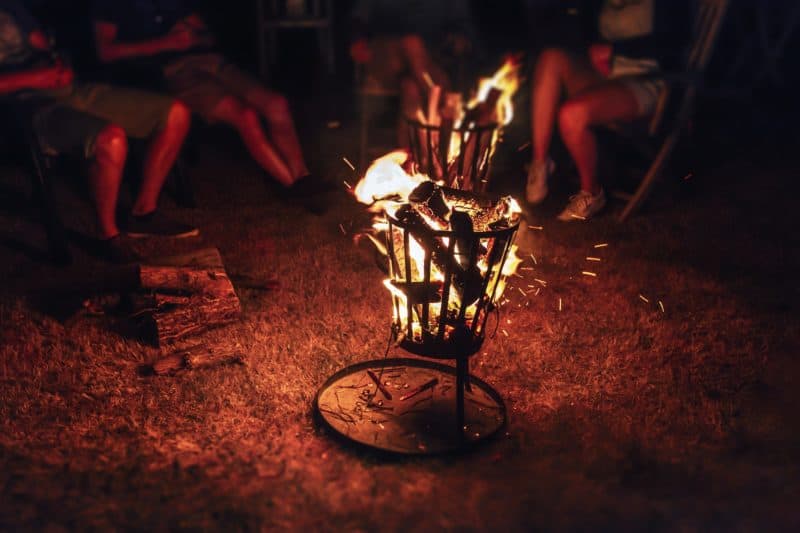
One interesting tidbit I gleaned from the first-hand accounts of that eventful Thanksgiving was that the pilgrims sat at tables. Meanwhile, the Wampanoag ate while sitting on the ground. That idea seemed so liberating to me.
We spend so much time trying to decorate our tables, plan seating for everyone, making sure we have enough plates, etc. What if you could just throw out a few blankets and let people sit where they wanted? How about gathering around a fire pit to enjoy the crisp autumn air?
I often get stuck in a rut thinking things must be a certain way that I spend more time worrying and preparing than enjoying the process. Having the liberty to throw out certain conventions like using formal dining tables, takes all that stress away.
Now, you may want to offer more formal seating to family or friends who have difficulty getting up or down. However, for everyone else, offer them your version of Wampanoag hospitality and help them get grounded on your homestead.
Most of what we consider normal are really just a limitation placed on us by our habits and cultural traditions. The original Thanksgiving was about embracing a new life in an old world. Your homestead thanksgiving can be that way too.
Question any traditions that make it hard for you to host a Homestead Thanksgiving and be open to answers from other cultures.
Idea 7: Acknowledge Biases
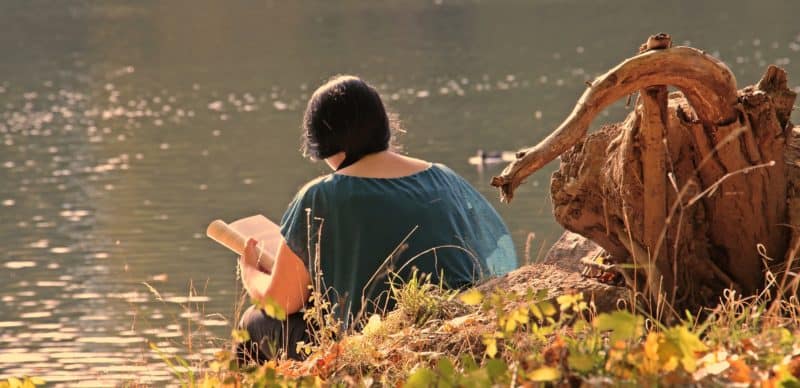
My perspective is that of an ancestor of the immigrants who displaced the Native Americans. If you are a Native American reading this post, I am sure you can see all my historical biases and the ways I miss or misinterpret, the Wampanoag contributions.
Though I can’t change the lens through which I see the world, I know that the way I see things is not the only way to see them. As my last homestead holiday advice, a big takeaway from that first Thanksgiving celebration is that even people from completely different backgrounds, languages, and cultures could set aside differences and find common ground – even if only for a little while.
This Homestead Thanksgiving, I hope that you can all find the opportunity to see things from someone else’s perspective. I also hope you’ll give thanks for the amazing diversity and richness of cultures that make our truly global world go round.

